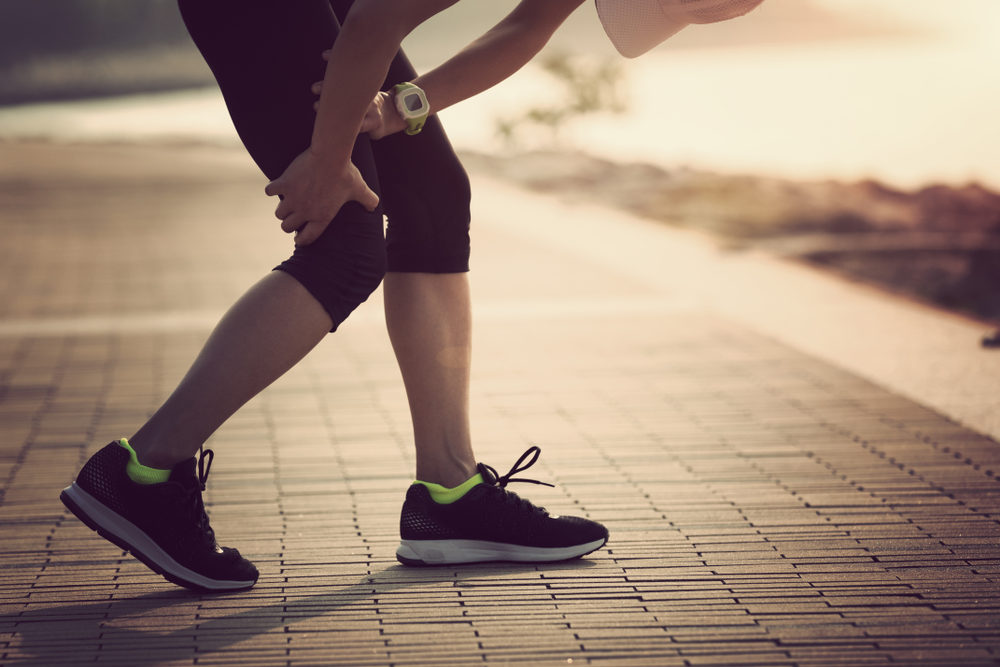Knee instability may be a sign of a serious condition, such as arthritis or a torn ACL. If your knees are buckling, consider making an appointment with your doctor to pinpoint the cause.
As the largest joint in the body, the knee is prone to a lot of stress, which can lead to injury and chronic wear and tear. One common symptom that may indicate an underlying condition is a tendency for the knees to buckle, often accompanied by pain.
Whether instability in your knee occurs abruptly or worsens over time, here’s what you need to know about the most common conditions affecting the knees — and how to get back to your active lifestyle.
ACL TEAR
The anterior cruciate ligament, or ACL, runs through the center of the knee, preventing the femur and tibia from sliding out of place. This ligament provides rotational stability, so if it is damaged, the knee can easily buckle. Unfortunately, ACL tears are common for athletes, as a misstep, jump, or direct impact can damage the ligament. If you tear your ACL, you’ll likely hear a popping sound, and the subsequent instability may come with swelling and sharp pain. You may have a limited range of motion, and be unable to bear weight on that leg.
In some cases, this injury does not require surgery and can be effectively treated with bracing and physical therapy. However, for younger patients, especially those who lead more active lifestyles, surgery is recommended. The procedure is minimally invasive, but usually involves grafting tissue, and requires around six months to heal. Physical therapy will gradually strengthen the area, and may allow athletes to eventually return to their sport.
MENISCUS TEAR
The meniscus is a cushion of cartilage that absorbs shock and stabilizes the knee. Tears in the meniscus can easily cause the joint to buckle. Contact sports are to blame for many meniscus tears, but degenerative tears are possible as well, especially for older patients. When this injury occurs, you may hear a “pop” in the joint. It may take several days for symptoms to worsen, with the knee becoming stiff, swollen, and painful, and sometimes locking.
Your doctor will likely diagnose your injury with a McMurray test, which involves bending, straightening, and rotating the knee, and then perform an X-ray and MRI. The treatment plan will vary based on the shape of the tear, and whether the damage occurs in the red zone (where blood flow is more active), or the white zone (where access to blood vessels is limited). White zone damage is more likely to require surgery to trim or repair the tear.
ARTHRITIS
Arthritis is an inflammatory condition affecting the joints, and is very common in the knees. There are two main types: osteoarthritis and rheumatoid arthritis. Osteoarthritis is caused by wear and tear in the joints of older patients. As the cartilage in the knee rubs away, the bones may begin to abrade each other. Rheumatoid arthritis is an autoimmune disease that can affect even teenagers, causing pain and deformity in the joints. In this case, the knee’s protective and lubricating synovial membrane may swell, leading to stiffness. Arthritis can also occur as a result of previous injuries in a particular area.
Arthritis pain can cause buckling in the knee, a clicking or locking sensation, stiffness, swelling, and difficulty moving the knee. Your doctor may prescribe pain medication to manage the symptoms, along with a brace, and will recommend exercises to strengthen the area and improve function. Various knee replacement surgeries can offer relief for more severe cases.
PATELLOFEMORAL PAIN SYNDROME (RUNNER’S KNEE)
Also known as runner’s knee, this condition causes pain in the front of the knee due to kneecap misalignment. The kneecap, or patella, may be pulled out of place by overly loose or tight muscles. Physical activity like running or climbing stairs can exacerbate the issue. Flat feet or direct trauma can also be contributing factors. Runner’s knee may arise due to sudden changes in frequency or duration of exercise, and you will likely notice a dull ache in the front of the knee. You may experience pain after sitting for long periods or repeatedly bending the knee, as during stair-climbing or squats. The joint may pop or crack, and you may experience a buckling sensation.
If you’re suffering from runner’s knee, you should temporarily avoid activities that stress the knee, and instead consider alternatives like biking or swimming. Luckily, most cases can improve with physical therapy focused on strengthening the quadriceps in order to stabilize the kneecaps. Your doctor may recommend leg extensions and stabilizing orthotics, along with bracing, icing, and anti-inflammatory medication. In some cases, surgery may be necessary to remove or realign tissue in the knee.
PATELLAR DISLOCATION
The patella covers the front of the knee joint and is set in the trochlea, a groove in the femur. A dislodged kneecap is most common in active young people, and is often the result of direct impact. The knee may buckle from intense pain, accompanied by swelling and a restricted range of motion.
The immediate course of action is to rest, brace, and ice the knee until the swelling subsides. Anti-inflammatory medications can help with the pain. Five or six weeks of strengthening exercises can often be effective in restoring use of the joint. Patients should wear a brace during this time to prevent additional dislocations.
If the dislocation is severe, recurrent, or involves damage to the cartilage or bone, surgery may be necessary. Your orthopedic surgeon may perform a minimally invasive procedure to repair the tissue, or use a graft to reconstruct the medial patellofemoral ligament. The recovery time after surgery is usually several months.
If you’re experiencing knee pain or instability, visit the orthopedic specialists at New York Bone & Joint. Our doctors can provide a clear diagnosis, along with a recovery plan tailored to your needs.




